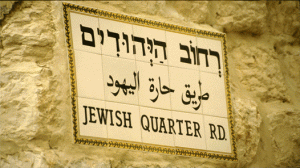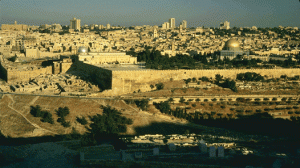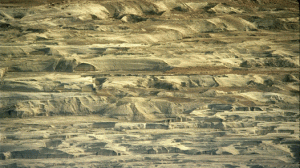
The Hebrew language has the distinction of being one of the world’s oldest languages. It is still spoken and written much as it was over two thousand years ago. The use of Hebrew as a spoken language began to decline around 250 B.C., but continued to be used in religious services and in literature. It went through a revival in the 19th century and is now the main language of Israel. Arabic is the second most used language in Israel and English is widely spoken as well.

In 1909 Jewish immigrants built Tel Aviv on the Mediterranean; its name means “Hill of the Spring” in Hebrew. In 1950 Tel Aviv and the ancient port city of Yafo (also called Jaffa) merged. Although Jerusalem is the capital of Israel, Tel Aviv-Jaffa is the nation’s center for industry, finance and publishing. The city, along with Haifa (some 50 miles away) accounts for about 50 percent of Israel’s population.

Jerusalem has been the capital of the State of Israel since its establishment in 1948, but the city itself has been inhabited for almost 5,000 years. The part of Jerusalem that lies within the ancient city walls is known as the Old City, and contains the Jewish, Muslim, Christian and Armenian sections. Outside the walls are the newer residential areas settled by more recent immigrants. Jerusalem is unique in that it is a holy city for three of the world’s major religions: Judaism, Islam and Christianity.

The Dead Sea, which lies on the border of Israel and Jordan, isn’t really a sea at all, but a lake in the middle of a desert, fed by the Jordan River. Due to the heat of the desert and the lake’s low elevation (at 1,315 feet/401 meters below sea level, it’s the lowest place on earth), water evaporates quickly, making the Dead Sea extremely saline. In fact, the salt concentration is so high that it’s almost impossible for a person to sink in the water, and fish that enter the lake from the river die immediately.

The 1995 population of Israel was 5,386,000, of which 82 percent was Jewish. The Chief Rabbinical Council, which is the highest Jewish religious authority, has two chief rabbis- one each for the Ashkenazic (or European), and Sephardic (or Eastern-Oriental) communities. About 77 percent of the non-Jewish population is Arab Muslim. The next largest grouping is Arab Christian, especially Greek Melkite and Greek Orthodox. The Druze, about 1.7 percent of the non-Jewish population, are an 11th-century non-Muslim Arab religious sect.

Kibbutzim (singular, kibbutz) are communal settlements (similar to the one shown here) with property owned in common, work done without direct payment, and all members’ needs met from common income. The kibbutz has achieved a high standard of living that provides group housing, dining, education, culture, recreation, health, child rearing, and other services. Approximately 20 percent of Israel’s industrial exports come from kibbutz-owned production facilities.

Tourism is one of the country’s economic mainstays and sources of foreign exchange. More than 1.1 million tourists visit the country each year. Many of the tourist are pilgrims who travel to see the holy sites of the world’s three major religions: Judaism, Islam, and Christianity.
